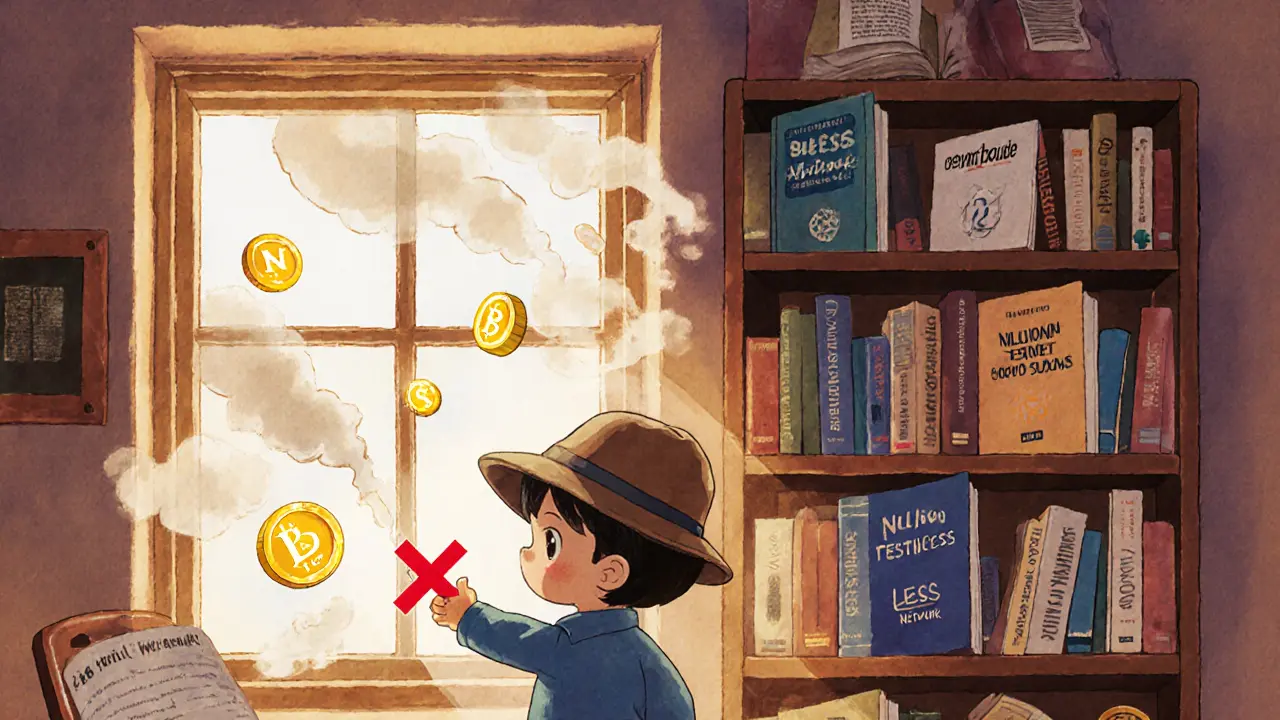Posted By Tristan Valehart On 17 Nov 2025 Comments (0)

Airdrop Legitimacy Checker
Verify if a crypto airdrop is legitimate using the industry-standard criteria. Enter the airdrop details and our tool will analyze them against the red flags described in the article.
There’s no official information about a LESS Network airdrop. Not from their website, not from their Telegram, not from any verified social media channel. If you’ve seen a post claiming LESS Network is giving away free tokens, it’s likely a scam. Crypto airdrops are often used as bait for phishing schemes, and LESS Network is no exception.
Why You Can’t Find Details About a LESS Network Airdrop
LESS Network doesn’t exist as a public blockchain project. There’s no whitepaper, no GitHub repo, no team members listed on LinkedIn, and no blockchain explorer showing any activity tied to the name. A quick check on CoinMarketCap, CoinGecko, and DeFiLlama shows zero results for LESS Network or any token with the symbol LESS. That’s not an oversight-it’s a red flag.
Compare this to real airdrops like CESS Network, which ran a public campaign from June to July 2025 with 1.3 million CESS tokens and $70,000 in USDT rewards. Or Bless Network, which had a clear registration window from August 13-21, 2025, with step-by-step instructions on their official site. Real projects don’t hide. They document everything. LESS Network doesn’t even have a trace.
How Scammers Use Fake Airdrop Names
Scammers copy names that sound similar to real projects. LESS Network is likely designed to trick people searching for LESS tokens-maybe they meant CESS, or maybe they were looking at Lisk (LISK) or even Lens Protocol. The similarity in spelling is intentional. You type “LESS Network airdrop” into Google, and suddenly you’re on a fake site asking for your wallet seed phrase.
These sites look professional. They use official-looking logos, fake testimonials, and countdown timers. They’ll tell you to connect your MetaMask, claim your tokens, and pay a small “gas fee” to unlock them. That’s the trap. Once you connect your wallet, they drain it. No tokens are ever sent. No refund. No recourse.

Real Airdrops Don’t Ask for Your Private Key
If you’re ever asked to:
- Enter your seed phrase
- Sign a transaction you don’t understand
- Send ETH or USDT to claim free tokens
- Connect your wallet to an unknown website
-you’re being scammed. Real airdrops distribute tokens to wallets that already met eligibility criteria-like holding a specific token, using a dApp, or participating in a testnet. They never ask for access. They never charge fees. They never rush you.
For example, Nillion Network’s 2025 airdrop required users to complete tasks on their testnet and submit proof via their official portal. No wallet connection was needed until the final claim stage-and even then, it was optional. No fees. No surprises.
How to Spot a Fake Airdrop
Here’s how to protect yourself:
- Check the official domain. LESS Network’s site might be lessnetwork.io, but the real one would be less.network or lessprotocol.org. If it’s a random .xyz or .io with no history, walk away.
- Search for the project on GitHub. Real teams code publicly. No repo? No legitimacy.
- Look for audits. Real projects get audited by firms like CertiK or Hacken. No audit? No trust.
- Check Twitter/X and Telegram. Real projects have active, verified accounts with hundreds of real comments-not just bots saying “CLAIM NOW!”
- Google the name + “scam.” If you see even one report, assume it’s dangerous.
There’s a reason you can’t find details about LESS Network’s airdrop. Because it doesn’t exist.

What to Do Instead
If you want to participate in real airdrops in 2025, focus on projects with clear track records:
- CESS Network - Ran a public airdrop in mid-2025 with over 1,300,000 tokens distributed.
- Bless Network - Opened registration in August 2025 for users who staked or referred others.
- Nillion Network - A privacy-focused chain with active testnet participation and public claim rules.
- Initia - Launched its testnet in early 2025 and rewarded early contributors.
Follow their official channels. Bookmark their websites. Set calendar reminders for registration windows. Don’t chase hype. Don’t click links from random Discord DMs. Real opportunities don’t come from spam.
Final Warning: Your Wallet Is Your Responsibility
There’s no such thing as free money in crypto-only free access to your funds. Scammers count on urgency, excitement, and fear of missing out. They know you’ll act before you think.
Remember: if it sounds too good to be true, it is. If you can’t find a single credible source about it, it’s fake. LESS Network’s airdrop isn’t hidden-it’s nonexistent. Protect your assets. Walk away from anything that asks for your private key. And never, ever connect your wallet to a site you didn’t find through official channels.
The next time you hear about a “new airdrop,” pause. Do the check. Ask yourself: Why haven’t I heard about this on CoinGecko? Why is there no whitepaper? Why is the team anonymous? If the answers don’t add up, they’re not offering tokens-they’re offering a trap.

